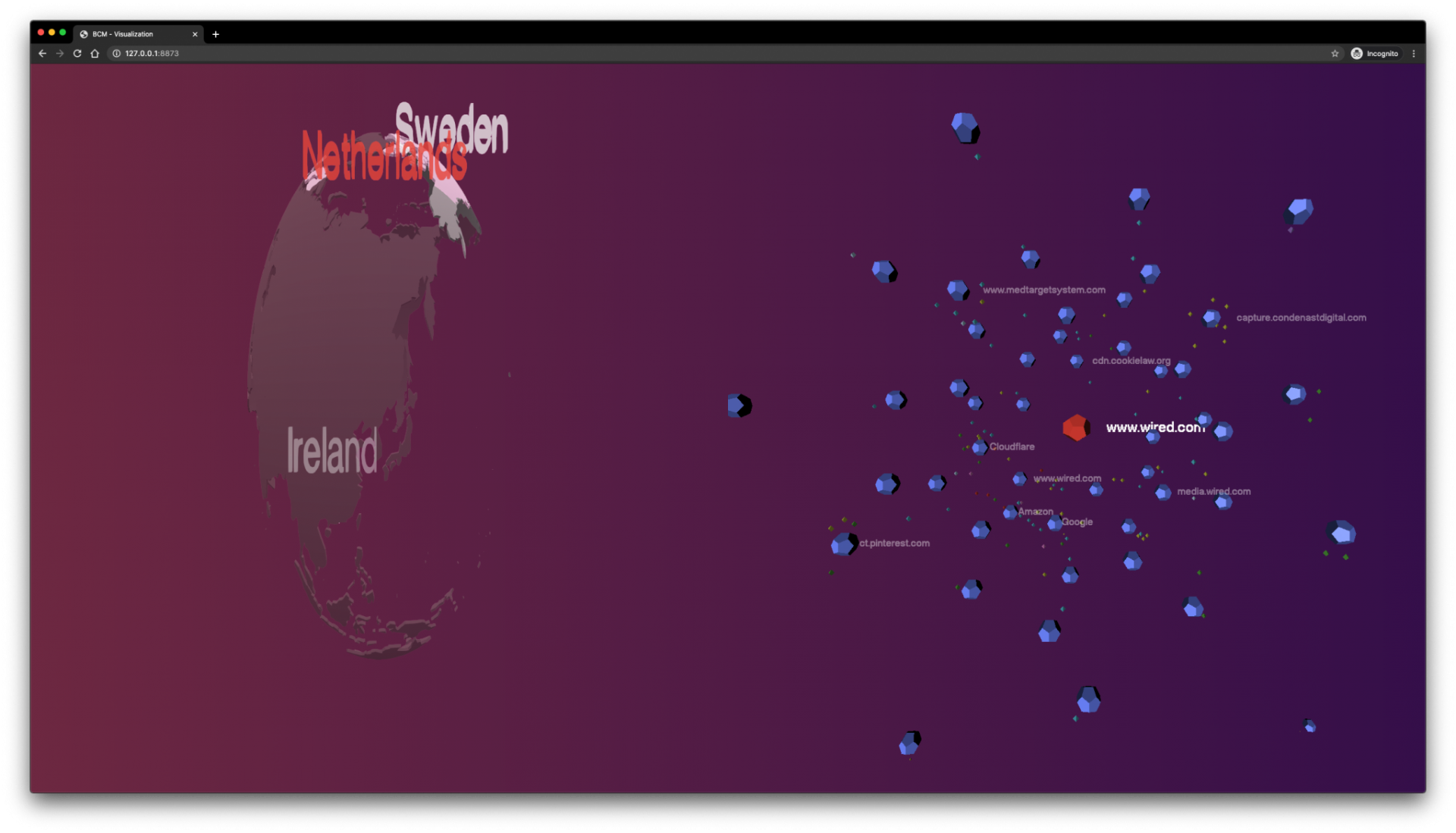Understanding invisible connections through our emotions and senses. That is what Professor Benoit Baudry and his art collective ReThread hope to achieve with the interactive art installation Pellow. An exhibition literally giving a sense of what goes on under of the hood of the world wide web. Opens at Tekniska Museet in Stockholm, October 26.
Pellow is an interactive art installation that visualizes the connections going on when visiting a website. As a visitor on a webpage, you wish to establish a connection with one specific page and organisation, but according to Benoit Baudry, in reality this is not the case.
“The website communicates with other machines all over the world fetching images, fonts and different content. It looks very simple, but what the browser does is something very complex; aggregating content from different organizations and parts of the world and it does this super-fast. Pellow visualize how many machines that are connected and where in the world they are located. Except from the visual element it also has a very strong sound component.”
Beyond our Understanding
Software is constantly all around us. And even if we can’t see it, we interact with heaps of pieces of software in our everyday life. Given the amount of time we spend interacting with software and given the importance of the services we rely on software, the public knows very little about what software actually is and how it works.
“The scale and speed of software today is beyond what we can understand. There sure are benefits but we have to admit that it goes beyond what we can explain in detail. What we do know is that we cannot tame or control it because not everything can be predictive. As soon as you plug in a computer to the internet – everything can happen. To understand software, we need multiple disciplines and a very thorough scientific approach.”
Professor Benoit Baudry has been exploring cooperating with artist for a couple of years as a mean to spread knowledge about software research and make it more accessible to the public.
“We, professors, are often not good at reaching out to the public. How can we reduce this gap? I do not teach the citizens about technology, that is what I do in my role here at KTH, instead we create an emotional connection between the public and software through art. Software is very abstract, art can be abstract, and so in doing abstractions science and art meets.”
ReThread Art Collective
About a year ago, Professor Baudry and his team organized a “Continues integration Art Hackathon” in the old Reaktorhallen at KTH Royal Institute of Technology. At the same time, he was recruiting two new members to his multidisciplinary research group. This would be the start of the art collective ReThread.
“The ReThread collective consists of two designers, one music composer, one software researcher and me. They are all part of my research group. It was important to have a name and a webpage for what we did and so ReThread was created. When being in a multidisciplinary environment you are aligning perspectives. My perspective is to do science, supervise PhD students and write papers. The music composer and the designers in my group they are living on creating art. We do this together and for different reasons. This is the seed for something original, which we integrate as part of our scientific and creative journeys.”

Visit Pellow
The art installation Pellow opens at Tekniska Museet, Stockholm on October 26. It will be on display for at least four weeks.
Read More
Published: October 27th, 2020



